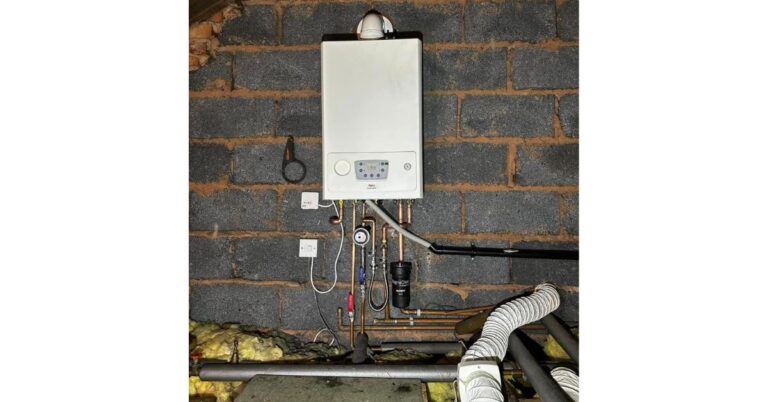10 Practical Tips for Boosting Your Home’s Energy Efficiency
Key Takeaways
- Simple changes can make significant impacts on home energy savings.
- Understanding and optimizing home heating, cooling, and insulation can reduce energy bills.
- Using energy-efficient appliances and practicing mindful habits can lower your carbon footprint.
1. Assess Your Home’s Insulation
Proper insulation is crucial to maintaining energy efficiency in your home. When your home is well-insulated, it can retain heat during the winter and stay cooler in the summer, resulting in significant energy savings. Attics, walls, and floors are the primary areas to assess for insulation. If these areas are not properly insulated, your heating and cooling systems need to work much harder to maintain the desired temperatures, leading to higher energy bills. Follow the energy efficiency guidelines to ensure that your insulation meets the required standards and provides the protection your home needs.
2. Seal Gaps and Cracks
Air leaks account for a significant portion of energy loss in homes. Inspect your property for gaps and cracks around windows, doors, and other openings where air might escape. By sealing these gaps with weather stripping or caulk, you can prevent cold air from entering in the winter and hot air from infiltrating during the summer. Not only does this help in maintaining a steadier indoor temperature, but it also reduces the strain on your HVAC system. If you ever find yourself wondering, Why did my AC stop working suddenly? air leaks could be among the culprits causing unnecessary stress on your cooling system.
3. Optimize Your Heating and Cooling Systems
Your HVAC system is one of the biggest energy consumers in your home. To ensure that it operates efficiently, regular maintenance is essential. This includes tasks like cleaning or replacing filters, checking the thermostat settings, and inspecting the system for any issues. Using a smart thermostat can optimize your HVAC system’s performance by automatically adjusting temperatures based on your schedule and preferences. According to Consumer Reports, these simple steps can lead to substantial energy savings over time, as a well-maintained system uses less energy and provides more consistent temperatures.
4. Upgrade to Energy-Efficient Windows
Older windows can be a significant source of energy loss, letting in drafts and failing to retain the indoor temperature effectively. Upgrading to energy-efficient windows can substantially improve your home’s insulation, leading to lower energy consumption and reduced utility bills. ENERGY STAR-rated windows are recommended as they meet strict energy efficiency guidelines, ensuring better performance in sealing out the weather and maintaining your home’s temperature.
5. Use LED Lighting
Lighting is another area where substantial energy savings can be achieved with simple changes. Replacing traditional incandescent bulbs with LED lighting can reduce your energy consumption drastically. LED bulbs use at least 75% less energy and last 25 times longer than incandescent lighting. This means that not only will you save on energy bills, but you’ll also save on the cost and effort of frequent replacements.
6. Install a Programmable Thermostat
Installing a programmable thermostat can help optimize the heating and cooling of your home based on your schedule. These devices allow you to set specific temperatures for different times of the day, ensuring that your system works efficiently only when needed. For example, you can lower the temperature during the hours you’re at work or while you’re sleeping. Programmable thermostats make it easy to maintain a comfortable home environment while minimizing energy wastage.
7. Unplug Electronics When Not in Use
Many electronic devices continue to draw power even when turned off, contributing to unnecessary energy consumption. This is known as “phantom” energy usage. By unplugging devices or using power strips that can be turned off when electronics are not in use, you can significantly reduce your overall energy consumption. Simple actions like unplugging chargers, televisions, and other appliances when they’re not needed can accumulate substantial energy savings over time.
8. Choose Energy-Efficient Appliances
When it comes time to replace appliances in your home, consider opting for energy-efficient models. Look for appliances with the ENERGY STAR label, which indicates that they meet strict energy efficiency requirements set by the U.S. Environmental Protection Agency (EPA). Energy-efficient appliances not only consume less power but also often come with improved functionality and enhanced performance, making them a worthy investment for both your wallet and the environment.
9. Consider Renewable Energy Sources
Installing renewable energy sources like solar panels or wind turbines can greatly reduce your reliance on traditional energy forms. These systems generate clean energy, and once the initial installation cost is recouped, they provide virtually free energy for years to come. Not only can this lead to substantial savings on your energy bills, but it also contributes to a greener planet by reducing your carbon footprint.
10. Practice Mindful Energy Habits
Lastly, adopting mindful energy habits can significantly reduce your home’s energy consumption. Simple practices like turning off lights when leaving a room, utilizing natural light during the day, and setting your thermostat to more energy-efficient temperatures all contribute to lowering energy usage. Encouraging your family members to adopt these habits can promote a culture of energy efficiency in your household, ultimately leading to long-term energy savings and a positive environmental impact.







